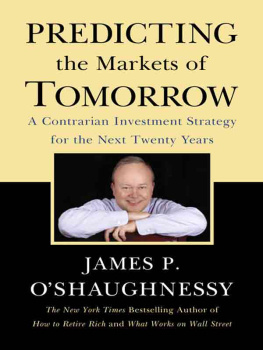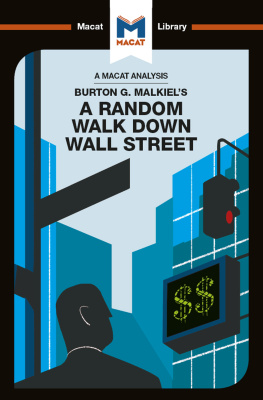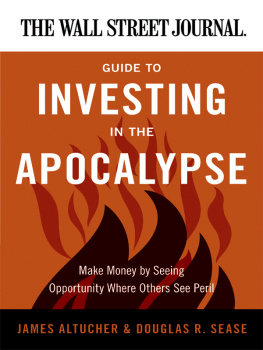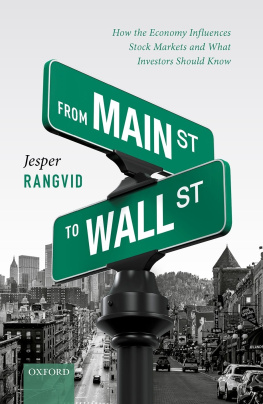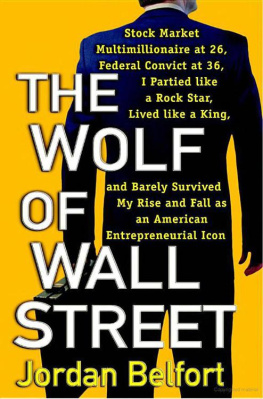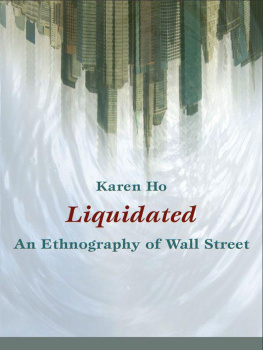WHAT WORKS ON WALL STREET
The Classic Guide to the Best-Performing Investment Strategies of All Time
JAMES P. OSHAUGHNESSY
Fourth Edition


Copyright 2012 by James P. OShaughnessy. All rights reserved. Except as permitted under the United States Copyright Act of 1976, no part of this publication may be reproduced or distributed in any form or by any means, or stored in a database or retrieval system, without the prior written permission of the publisher.
ISBN: 978-0-07-175919-9
MHID: 0-07-175919-0
The material in this eBook also appears in the print version of this title: ISBN: 978-0-07-162576-0, MHID: 0-07-162576-3.
All trademarks are trademarks of their respective owners. Rather than put a trademark symbol after every occurrence of a trademarked name, we use names in an editorial fashion only, and to the benefit of the trademark owner, with no intention of infringement of the trademark. Where such designations appear in this book, they have been printed with initial caps.
McGraw-Hill eBooks are available at special quantity discounts to use as premiums and sales promotions, or for use in corporate training programs. To contact a representative please e-mail us at bulksales@mcgraw-hill.com.
This publication is designed to provide accurate and authoritative information in regard to the subject matter covered. It is sold with the understanding that neither the author nor the publisher is engaged in rendering legal, accounting, securities trading, or other professional services. If legal advice or other expert assistance is required, the services of a competent professional person should be sought.
From a Declaration of Principles Jointly Adopted by a Committee of the American Bar Association and a Committee of Publishers and Associations
This book contains statements and statistics that have been obtained from sources believed to be reliable but are not guaranteed as to accuracy or completeness. Neither OShaughnessy nor the information providers can guarantee the accuracy, completeness, or timeliness of any of the information in the book, including, but not limited to, information originating with OShaughnessy, licensed byOShaughnessy from information providers, or gathered by OShaughnessy from publically available sources. There may be omissions or inaccuracies in the information contained in the book. Neither OShaughnessy, the publisher, nor any of the information providers shall have any liability, contingent or otherwise, for the accuracy, completeness, or timeliness of the information or for any decision made or action taken by you in reliance upon the information in this book. Neither OShaughnessy, the publisher, nor the information providers make any representations about the suitability of the information contained in the book and all such information is provided as is without warranty of any kind.
TERMS OF USE
This is a copyrighted work and The McGraw-Hill Companies, Inc. (McGraw-Hill) and its licensors reserve all rights in and to the work. Use of this work is subject to these terms. Except as permitted under the Copyright Act of 1976 and the right to store and retrieve one copy of the work, you may not decompile, disassemble, reverse engineer, reproduce, modify, create derivative works based upon, transmit, distribute, disseminate, sell, publish or sublicense the work or any part of it without McGraw-Hills prior consent. You may use the work for your own noncommercial and personal use; any other use of the work is strictly prohibited. Your right to use the work may be terminated if you fail to comply with these terms.
THE WORK IS PROVIDED AS IS. McGRAW-HILL AND ITS LICENSORS MAKE NO GUARANTEES OR WARRANTIES AS TO THE ACCURACY, ADEQUACY OR COMPLETENESS OF OR RESULTS TO BE OBTAINED FROM USING THE WORK, INCLUDING ANY INFORMATION THAT CAN BE ACCESSED THROUGH THE WORK VIA HYPERLINK OR OTHERWISE, AND EXPRESSLY DISCLAIM ANY WARRANTY, EXPRESS OR IMPLIED, INCLUDING BUT NOT LIMITED TO IMPLIED WARRANTIES OF MERCHANTABILITY OR FITNESS FOR A PARTICULAR PURPOSE. McGraw-Hill and its licensors do not warrant or guarantee that the functions contained in the work will meet your requirements or that its operation will be uninterrupted or error free. Neither McGraw-Hill nor its licensors shall be liable to you or anyone else for any inaccuracy, error or omission, regardless of cause, in the work or for any damages resulting therefrom. McGraw-Hill has no responsibility for the content of any information accessed through the work. Under no circumstances shall McGraw-Hill and/or its licensors be liable for any indirect, incidental, special, punitive, consequential or similar damages that result from the use of or inability to use the work, even if any of them has been advised of the possibility of such damages. This limitation of liability shall apply to any claim or cause whatsoever whether such claim or cause arises in contract, tort or otherwise.
To Lael, Kathryn, Patrick, and Melissa
ABOUT THE AUTHOR
James P. OShaughnessy is the Chairman and CEO of OShaughnessy Asset Management LLC, a quantitative asset management company located in Stamford, Connecticut. He is the author of four books on investing. Long recognized as one of Americas leading financial experts and a pioneer in quantitative equity analysis, he has been called a world beater, a statistical guru, and a legendary investor by Barrons. In February 2009, Forbes included Jim in a series on Legendary Investors along with Benjamin Graham, Warren Buffet, and Peter Lynch. OShaughnessys investment strategies have been featured widely in the media, including The Wall Street Journal, Barrons, The New York Times, The Washington Post, The Financial Times, CNN and CNBC.
Wait for the wisest of all counselors, time.
Pericles
INTRODUCTION
The Chinese use two brush strokes to write the word crisis. One brush stroke stands for danger; the other for opportunity. In a crisis, be aware of the dangerbut recognize the opportunity.
John F. Kennedy
This fourth edition of What Works on Wall Street has the dubious distinction of being published on the heels of the worst decade for U.S. stocks in 110 years! The first decade of 2000 began full of promise, with swarms of first-time equity buyers rushing into a market where the Nasdaq had increased nearly sevenfold (even after accounting for inflation) in the 1990s and the S&P 500 had risen nearly fourfold. As the first decade of the twenty-first century progressed, it became painfully clear that the early optimism investors had for equity returns was completely unjustified.
The decade ended with a real loss of 3.39 percent per year for the S&P 500, where $10,000 invested on December 31, 1999, was worth just $7,083 after taking the effects of inflation into account by the end of 2009. It was even worse for large-cap growth stocks as measured by the Russell 1000 Growth Index, where $10,000 invested on December 31, 1999, was cut virtually in half by December 31, 2009, declining in value to just $5,190. The Nasdaqthe darling of investors in the 1990sdid even worse, losing 7.96 percent per year, turning $10,000 invested on December 31, 1999, into just $4,364 on December 31, 2009, a peak to trough decline between February 2000 and September 2002 of 76.59 percent, very close to that of the S&P 500 during the crash of 19291932. Only small stocks had a good run during the decade, with the Russell 2000 Index eking out a gain of 0.96 percent and the Russell 2000 Value Index returning 5.60 percent a year, the only broad U.S. stock index to beat U.S. long-term bonds, which returned 5.04 percent per year.


